Almanac: Zero
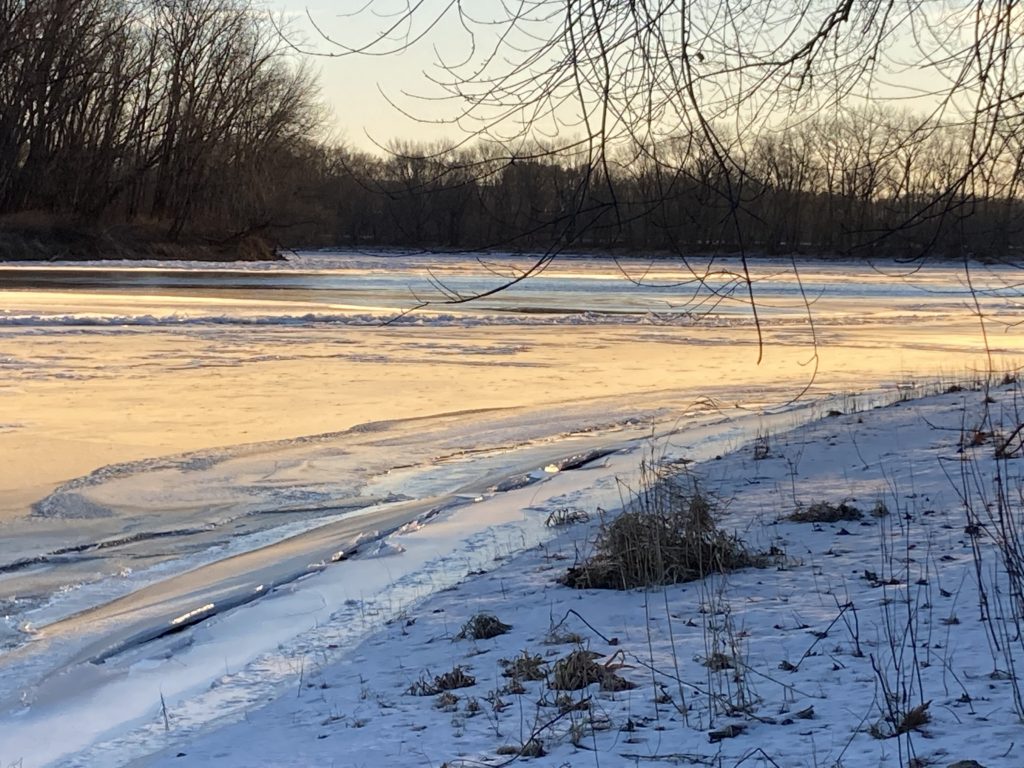
The Connecticut River In Pre-dawn Light. Photo: Stephen Braun
Before dawn last Saturday the temperature hovered near zero and a stiff north wind made it feel more like -20 F. A perfect day, in other words, for a walk to the Connecticut River to see what happens when warm-ish open water meets really frigid air. I was hoping for rising steam that formed exotic crystals on nearby tree branches or rocks.
As I headed out, dressed like an astronaut, a beautiful band of pink known as the Belt of Venus graced the western horizon. The belt is relatively common in clear skies just before dawn or after sunset, always opposite from the sun. Light from the below-horizon sun, reddened by passage through the atmosphere, is reflected backwards by tiny particulates in the upper atmosphere. For reasons I haven’t seen explained, the dawn Belt of Venus is a more vivid pink in winter than it is during warmer months. It was certainly lovely that morning. I would have tried to capture it on my phone, but I didn’t think it would show up well and, besides, I wanted to save my hands for the hoped-for ice crystals.
I walked across iron-hard fields and heard nothing but the wind in the tree branches. As I approached the river through a band of tall cottonwoods, however, I heard crows cawing. Emerging from the trees onto a high sandy beach I watched about two dozen crows fly directly into the teeth of the wind talking to each other as they flapped.
I’m always amazed when I see birds out and about at temperatures that would be dangerous or downright lethal for humans without adequate clothing. These crows seemed utterly oblivious to the cold. Of course, maybe they actually were cold and all that cawing was them telling each “Wow, it’s danged cold!” But if they were really that cold, wouldn’t they be perched somewhere sheltered with feathers fluffed up rather than flapping about in the wind? And what about their legs and feet? How could those thin, un-feathered limbs not freeze solid?
Well, first of all, bird feet and legs are mostly skin, bone, and tendons, which are tough materials that can withstand cold much better than blood-rich muscle. And when flying or roosting the legs and feet are tucked up into the feathers. The blood supply to the legs and feet are also designed to avoid having those appendages act like radiators, sapping precious heat from the bird’s body. Veins carrying cold blood from the feet back to the body are entwined with arteries bringing warm blood the other way. This lowers the temperature of the feet and legs, but it also warms the blood entering the bird’s body, thus conserving heat.
The sun had still not risen but the soft light was golden and played off the channels of open water on which rafts of thin ice floating by. When the current pushed an ice raft against the solid ice lining the shore, the collision made a delicate, crunching, tinkling sound. To my surprise, no steam rose from the open water. No weird crystals clung to nearby trees either.
I picked my way carefully along the shore heading north—a slip into the river would be quickly fatal. Rounding the bend I reached a rock outcropping. From that perch the first rays of sunlight gleamed off ridges of piled-up ice shards extending nearly across the river.
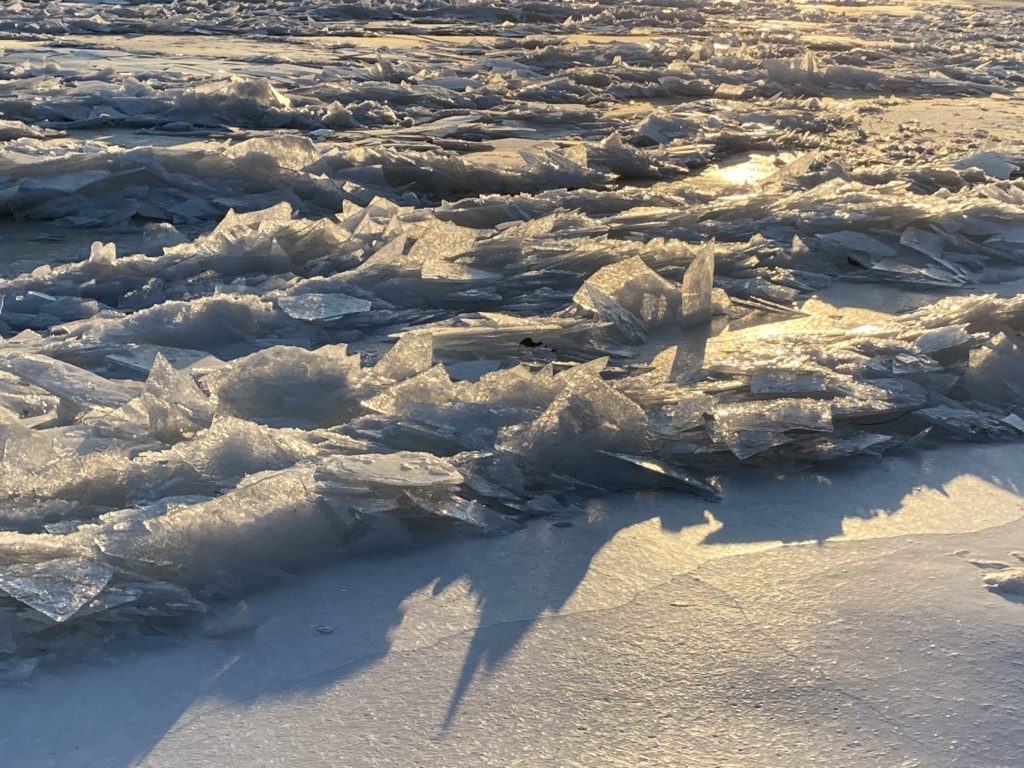
In the narrow channel of open water, two mergansers floated, diving at times for their breakfast and then popping up, behaving, like the crows, with perfect normalcy. A bald eagle flapped heavily above the far shore, heading south. Fresh canine tracks lined the snow, either foxes or coyotes at this location, far from any house, although I’m not skilled enough to tell which they were.
When I took a mitt off to take some shots the knife-edged wind numbed my hand in seconds. And this was just roughly a wind chill of -20 F. The coldest temperature ever recorded on earth is a staggering -128.6 degrees at Vostok, Antarctica. How that would feel on a bare hand I can only imagine. But even that insane cold is still warmer, by hundreds of degrees, from absolute zero, when all molecular motion stops. In the familiar (though increasingly antiquated) Fahrenheit temperature scale, that’s about -459 degrees. It’ll never get anywhere close to absolute zero on earth (outside of labs) because even during the six-month Antarctica night, the sun still shines on the rest of the earth and that heat is transported by wind and ocean currents to places like Vostok.
I turned away from the river and headed back to my car. After about 15 minutes of clumping along in my oh-so-heavy, oh-so-funny-looking, but oh-so-warm “bunny boots,” acquired during time I spent in the Arctic, I was actually sweating. I unzipped my outer jacket and lowered my hood, feeling fingers of icy air immediately infiltrate my hat and clothing. Maybe something similar happens in the creatures that remain active despite intense cold: with insulation, high metabolisms, and adaptations to appendages they create and retain a warmth that is more than a match for the coldest north wind.
Bonus Beauty
The day after my jaunt to the river the air had warmed up enough for a comfortable hike along trails in the Buffam Falls conservation area in Pelham. There I discovered the kinds of ice formations that I was expecting to see near the river, a few of which I share below.
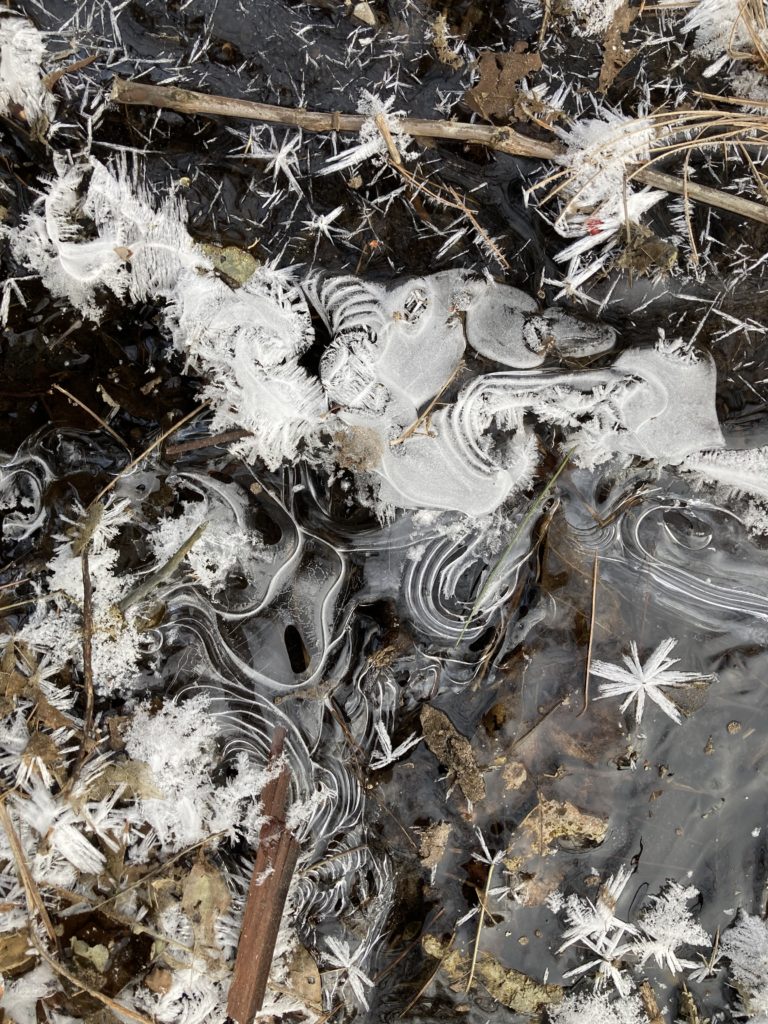
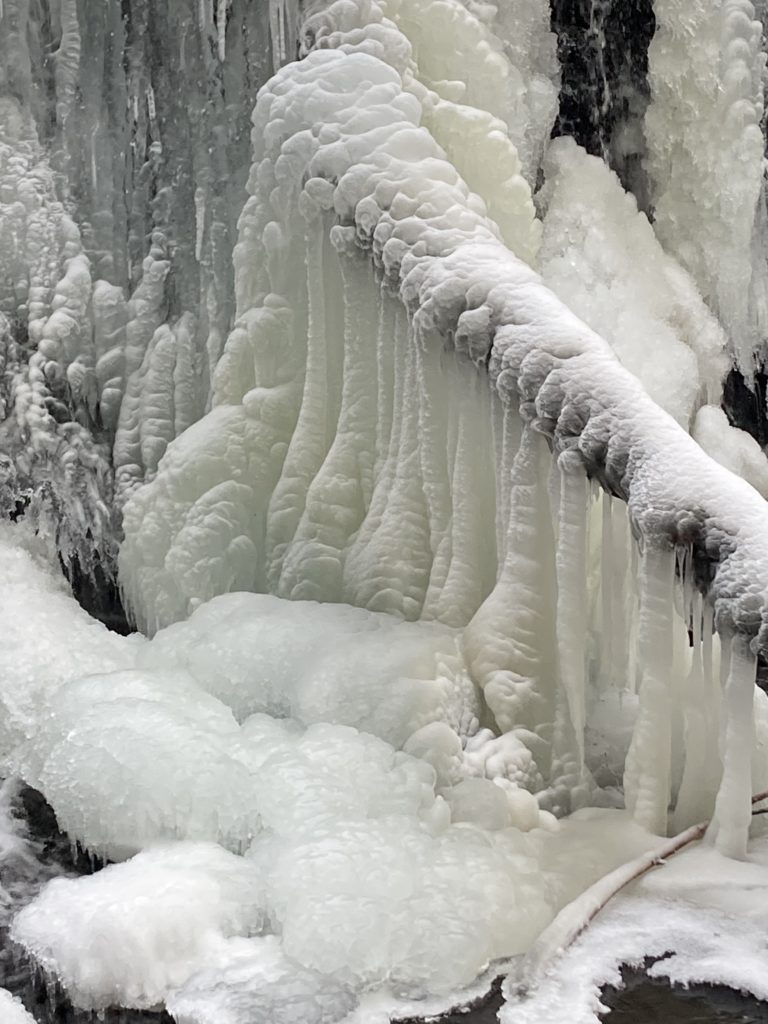
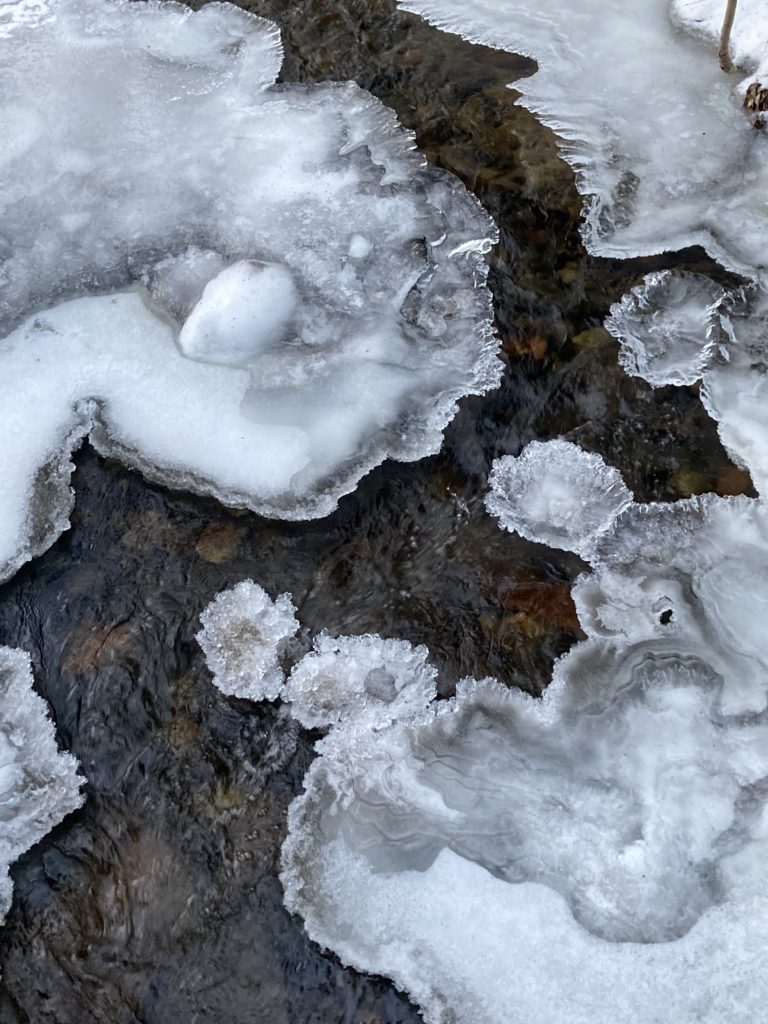
Almanac is a regular Indy column of observations, musings, and occasional harangues related to the woods, waters, mountains, and skies of the Pioneer Valley. Feel free to comment on posts or add your own experiences or observations.

Thank you Steve. I really missed the Almanac last week. These pictures are beautiful, and I didn’t need to go out in the freezing cold to appreciate them.
This is a particularly gorgeous batch, the more so because of the comfort you sacrificed to shoot them.
One curiosity of the Fahrenheit temperature scale is that (at 1Atm pressure) the freezing and boiling points of water are 180° apart — “opposites” in the geometric sense of “degrees” — and I’ve oft wondered about (but never found any compelling evidence for) this “accidental coincidence”….